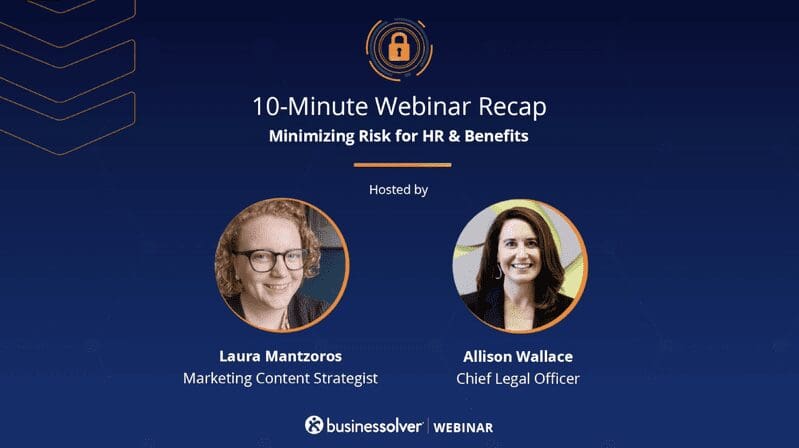Why HR Needs a Risk Management Strategy

As remote work and virtual administration become the norm, HR needs to have a risk management strategy in place to address cybersecurity and compliance year-round.
The shift to remote and hybrid work models has introduced new data and security risks to the HR landscape over the past few years. HR has a significant role to play as not only gatekeepers of data, but also deploying policies and keeping communication lines open cross-functionally to stay on top of the latest security threats and compliance deadlines.
That all sounds incredibly overwhelming. But it doesn’t have to be.
The key is to lean into the “cross-functional” part. While HR might be the gatekeepers, they certainly aren’t at it alone. Developing collaborative partnerships with your peers in IT security, legal, compliance, and corporate communications can ease the burden and help HR teams build a solid, scalable risk management strategy.
Cybersecurity and compliance are not one and the same.
First thing’s first: compliance and cybersecurity are not the same thing. While it might be easy to conflate the two, they play two very distinct roles in HR’s risk management strategy.
Compliance is how an organization satisfies standards put in place as dictated at the local, state, and/or federal level. Compliance includes tax reporting, price transparency, non-discrimination testing, and privacy (most notably HIPAA).
Cybersecurity is the infrastructure organizations build and use to maintain data security and protect their assets. For HR, this means ensuring that their benefits administration technology, privacy policies, vendor agreements, and more are as airtight as possible to protect their organization and employee data end-to-end.
In HR’s world, compliance and security must work independently and together to ensure year-round risk management for their organization.
What does HR need to consider for their risk management strategy?
While each organization’s risk management strategy will be unique to their needs and workforce, there are some standard best practices that organizations of all sizes and types can put into effect today.
If you haven’t already, it’s time to reinvigorate those cross-functional partnerships with compliance, legal, and IT security. These will be your go-to partners for establishing a risk management strategy that ensures not only is your HR team covering all of their bases, but your plan aligns with other organizational policies and strategies.
Once you’ve built out your cross-functional phonebook, it’s time to get tactical. Here’s what our experts highlighted as their top recommendations in our 2023 risk management webinar:
- Implement cybersecurity best-practices into your overall benefits plan, including how you work with vendors and the security protocols in place.
- Keep tabs on your data, like who has access to it, what you’re storing, and where.
- Perform regular tech and compliance audits—are you out of date on anything? Does your technology have any vulnerabilities that need to be patched?
- Set up a compliance check-in schedule to track deadlines and new items that you need to pay attention to.
Missed the live event but still want to hear the insights? Check out our 10-minute audio recap to get the highlights reel on how HR can bake compliance and cybersecurity into their risk management strategy. You can also enjoy the full on-demand recording and snag a compliance checklist here.
